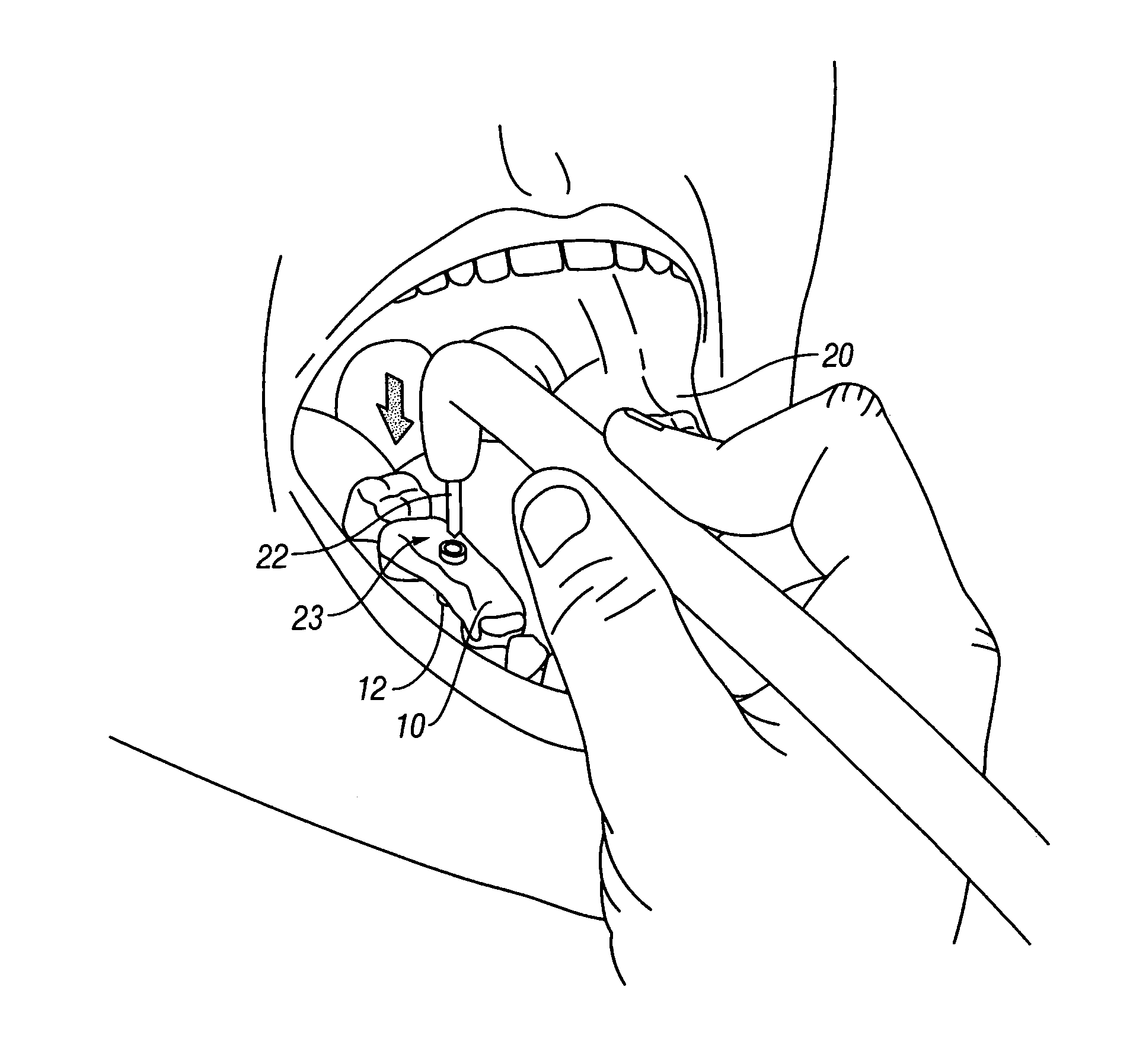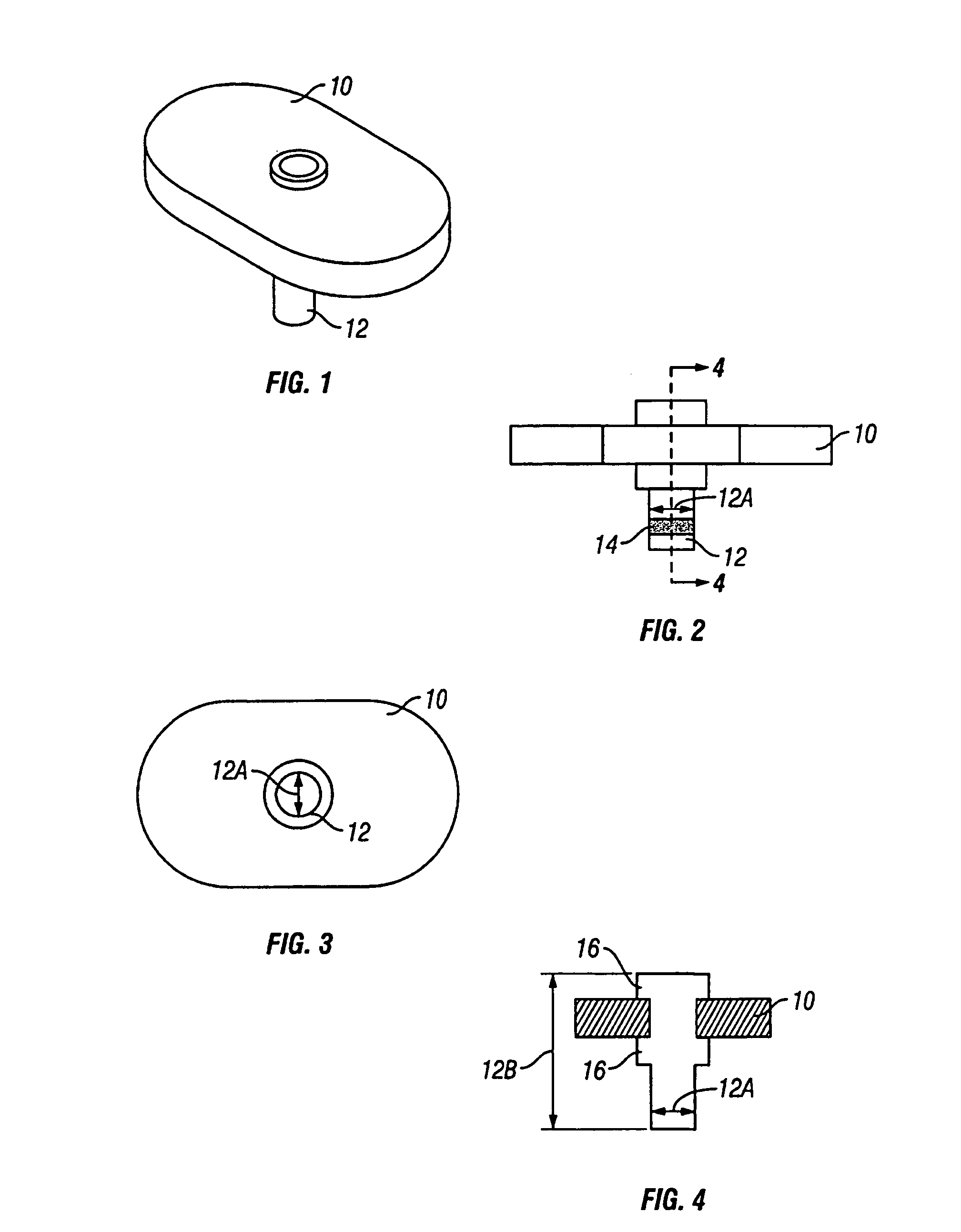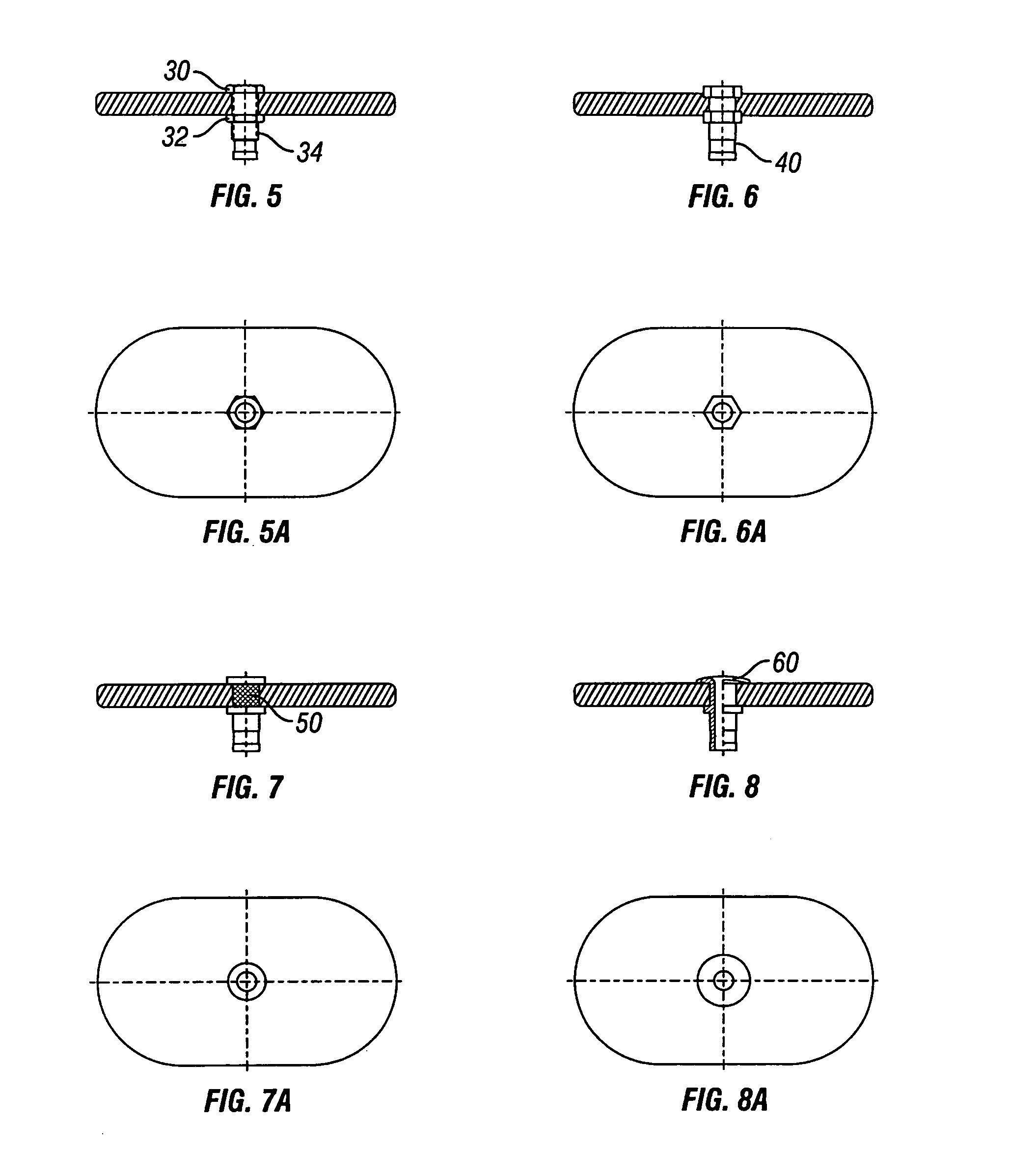Thermoplastic surgical template for performing dental implant osteotomies and method thereof
a dental implant and template technology, applied in the field of dental surgery, can solve the problems of inconvenient operation, inconvenient use, and inability to precisely perform free-handed techniques, and achieve the effects of reducing the amount of base material trimming, low and sharp melting point, and avoiding patient unsatisfactory side effects
- Summary
- Abstract
- Description
- Claims
- Application Information
AI Technical Summary
Benefits of technology
Problems solved by technology
Method used
Image
Examples
Embodiment Construction
FIG. 1—Template
[0051]One embodiment of a dental template for accurately performing osteotomies according to the invention includes a thermoplastic pre-molded surgical template as shown in the isometric view of FIG. 1. The template has a thermoplastic base 10 that will soften in hot water to a malleable state Base 10 has the physical properties of a low and sharp melting point (typically within the temperature range of 40° C.–100° C.) but having high rigidity at the solid state in room temperature. Base 10 can vary in dimension, shape, color and composition to allow better visibility during surgery and best custom fit between patients. An exemplary shape for base 10 is an elongated ellipse, as shown in FIG. 1, that is about 40×20×2 mm in size.
[0052]An exemplary material for base 10 is a polymer sold under the trademark TONE P-787 by Dow Chemical Company, U.S.A. TONE polymers are homopolymers of ε-caprolactone which exhibit a low and sharp melting point (60° C.), have excellent melt f...
PUM
 Login to View More
Login to View More Abstract
Description
Claims
Application Information
 Login to View More
Login to View More - R&D
- Intellectual Property
- Life Sciences
- Materials
- Tech Scout
- Unparalleled Data Quality
- Higher Quality Content
- 60% Fewer Hallucinations
Browse by: Latest US Patents, China's latest patents, Technical Efficacy Thesaurus, Application Domain, Technology Topic, Popular Technical Reports.
© 2025 PatSnap. All rights reserved.Legal|Privacy policy|Modern Slavery Act Transparency Statement|Sitemap|About US| Contact US: help@patsnap.com



